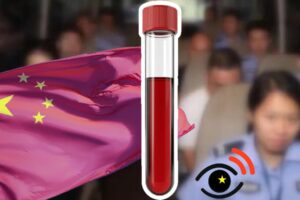
[SINGAPORE] Citing pressures from rising claims, medical inflation and expanded benefits, all private insurers but one here offering Integrated Shield Plans (IPs) have increased premiums for most of these products or riders in 2025.
Out of these seven insurers, six saw their net claims surge by between 9 per cent and 27 per cent in 2024.
The six have changed the coverage of their IPs and riders this year. As a result, all six have confirmed they have increased premiums of their products in 2025, in response to queries from The Straits Times.
The exception is Raffles Health Insurance (RHI), which saw a decline of 18 per cent in net claims in 2024, though it posted underwriting losses.
RHI, which entered the IP market in 2018, does not intend to implement any changes to its IP products, including premium adjustments. This makes it the only insurer that did not raise premiums for two consecutive years, even after the two-year moratorium on IP premium increases ended on Aug 31, 2024.
All Singaporeans are insured under the national MediShield Life scheme, which covers expenses incurred for hospitalisation and certain outpatient treatments such as radiotherapy and kidney dialysis.
BT in your inbox
Start and end each day with the latest news stories and analyses delivered straight to your inbox.
An IP is optional health coverage provided by private insurance companies on top of MediShield Life, typically to cover stays in A or B1-type wards in public hospitals, or private hospitals.
On top of the IP, insurers sell riders, which in general are meant to cover the patient’s share of the bill – the deductible and the remainder of the bill not covered by MediShield Life and IPs.
Ranging from S$1,500 to S$4,500 depending on age and ward class, the deductible is the fixed amount that a policyholder has to pay out of pocket in each policy year before receiving any payout from MediShield Life.
SEE ALSO
On the range of premium hikes in 2025, only Income Insurance and Singlife responded with specific figures. The remaining four did not provide figures when asked.
From Oct 1, Income’s average premium increase for IP plans was 4.5 per cent, while the average increase for its IP plans with riders was 10.8 per cent.
This comes after Income went from an underwriting profit of S$16.1 million in 2023, to a loss of S$49.5 million in 2024, despite raising premiums across the board in 2024.
The adjusted premiums “reflect expanded benefits and claims experience”, said Income chief customer officer Dhiren Amin.
Income’s enhanced benefits to most of its IPs from October largely mirrored the expansion of MediShield Life coverage – the base layer of IPs – to cover Mobile Inpatient Care @ Home (MIC@Home) services, which allow clinically suitable patients to be hospitalised at home; selected outpatient treatments; and high-cost drugs, including cell, tissue and gene therapy products (CTGTPs).
Singlife’s average premium increase across its portfolio was by “more than 10 per cent”, after it reported losses that more than doubled from S$26.2 million in 2023, to S$59.7 million in 2024.
From April 1, Singlife’s no-claims discount for its rider was raised from 15 per cent to 20 per cent, and it has included CTGTPs approved and listed by the Ministry of Health (MOH) in its coverage benefits.
HSBC Life, which also posted underwriting losses in 2024, adjusted premiums of its private hospital IP and rider in April “in line with industry standards”, said its chief health officer Manu Tandon. It also introduced premium discounts rewarding healthier lifestyle choices for one of its riders.
HSBC made changes in October to its IPs to introduce new outpatient and high-cost drugs benefits.
Prudential, which doubled its underwriting profit to S$25.3 million in 2024, adjusted benefits to some of its riders in April to encourage policyholders to seek care from panel providers.
This includes waiving claims-based premium pricing – which would see premiums increase if one or more claims are made – if claims under the riders were from panel providers.
In addition, policyholders using non-panel providers pay up to S$2,000 out of pocket before the rider covers 95 per cent of the remaining costs, while panel provider users have the full 95 per cent of their deductibles covered immediately. THE STRAITS TIMES





